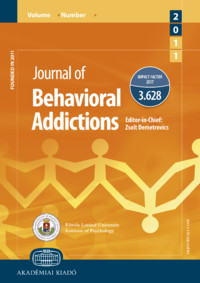The expanded interactional model of exercise addiction
The expanded interactional model of exercise addiction
Author(s): Jacob S. Dinardi, Alexei Y. Egorov, Attila SzabóSubject(s): Behaviorism
Published by: Akadémiai Kiadó
Keywords: addiction; compulsion; dependence; physical activity; training
Summary/Abstract: Background and aims: Cited in over 100 articles, the interactional model of exercise addiction (Egorov & Szabo, 2013) forms the theoretical foundation of many studies on the risk of exercise addiction. Still, the inclusion of previously omitted determinants could make it more useful. Therefore, this review presents the expanded version of the original model. Method: We added ‘self-concept’ as another determinant in the ‘personal factors’ domain and ‘attractive alternatives’ to the ‘situational factors’ domain. Further, we doubled the reasons for exercise in the ‘incentives for exercise domain.’ Last, we added a new domain, the ‘exercise-related stressors,’ to illustrate that exercise itself might be a source of stress. Results: The expanded model is more inclusive and accounts for a greater combination of interactions playing roles in exercise addiction. Overlooking the eventuality that stress resulting from exercise might also fuel the dysfunction was a significant omission from the original model, rectified in the current update. Finally, the new expansions make the model more applicable to competitive situations too Conclusion: The expanded interactional model of exercise addiction is more comprehensive than its original version. It also accounts for the exercise or sport-related stress as possible fuel in addictive exercise behavior.
Journal: Journal of Behavioral Addictions
- Issue Year: 10/2021
- Issue No: 3
- Page Range: 626-631
- Page Count: 6
- Language: English

